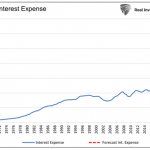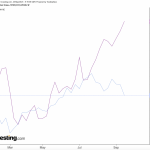Sub-Saharan Africa’s growth outlook dims amid debt crisis and global pressures


The International Monetary Fund (IMF) has revised Sub-Saharan Africa’s growth forecasts downwards due to mounting global and regional pressures. The region’s economic expansion is expected to slow to 3.3% this year, down from 4% in 2022, before rebounding to 4% in 2024. This downward revision is attributed to factors such as the ongoing impacts of COVID-19, Russia’s invasion of Ukraine, surging commodity prices, weakening currencies, soaring debt costs, restricted capital market access, and record power cuts in South Africa.
Countries like Angola, Nigeria, and South Africa are facing reduced growth projections. On the other hand, Kenya, Tanzania, and Senegal are set for increased growth despite regional upheaval including violent protests in Ghana and Kenya. The IMF anticipates that annual inflation across the region will reach 16.2% by the end of 2023 before falling to 10.5% by the end of 2024.
In a parallel report from the World Bank’s Africa’s Pulse October 2023, it was revealed that a persistent debt crisis has led over half of Sub-Saharan African countries to revise their 2023 growth estimates downwards. Larger economies that are underperforming are negatively impacting the region’s economic health, further worsened by conflict, violence, and climate-related disasters.
Out of the total 48 countries in the region, growth prospects for 28 have been downgraded and 21 face a high risk of external debt distress. Inflation rates exceed central bank targets in most nations, with nearly 18 dealing with average annual inflation rates of double digits or higher in 2023 due to escalating food and fuel costs and weakening domestic currencies.
Despite signs of economic progress, the region continues to be challenged by insufficient job creation and slow poverty reduction. The urban employment share for the working-age population has stagnated at roughly 22-23% for the past two decades. These economic challenges underline the need for comprehensive policy measures to address the region’s persistent hurdles to growth and development.












